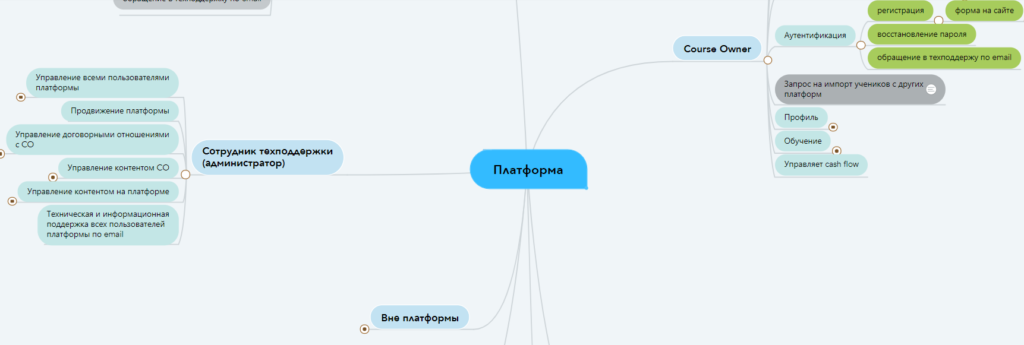What Mind Maps are
A Mental Map or Mind Map is a visual thinking tool used to gather information and ideas.
This is a diagram that contains tasks, ideas, pictures, words, and other elements related to a central concept or subject. All components are arranged around the center using a non-linear graphical layout that allows the user to build an intuitive structure.

The cards reflect existing ideas, but they also act as a catalyst that draws out new ideas.
What Mind Maps look like and what they consist of
All mental maps have common features. They have a natural organizational structure that comes from the center and uses lines, symbols, words, colors, and images.
Mind Map converts a long list of monotonous information into a memorable and well-organized diagram that works like a human brain.
Classic Mind Maps building Principles:
- Determine the purpose of the map: the size and detail depend on it.
- Highlight the main idea or object: this element is located in the center. It is from this particular element that the secondary lines and additional information originate.
- There should be only one idea on a line: it is advisable to highlight the meaning and reduce everything to one main word, not to overload the picture.
- The map is built on a circular principle: it should be possible to capture the whole picture at a time.
- Use pictures, multi-colored lines (determine the color values in advance), highlight keywords: it is necessary to avoid monotony as much as possible, the map should attract attention and concentrate on itself.

Who and why needs mental maps
Mind Map has many uses. Here are some of the most popular ones:
- brainstorming and idea generation;
- project planning;
- presentation of information;
- making notes;
- search for solutions;
- big data study.
Everyone can find the application of Mind Maps. Whether you are writing an essay or planning an event, mental maps can be used by different people for a variety of purposes.
- Marketing teams conduct brainstorming, plan advertising campaigns.
- Managers manage projects by improving them.
- Teachers make lessons up and use mental maps as a fascinating learning tool.
- Students take notes and remember information better.
At YuSMP Group, we use Mind Map at the discovery phase. This artifact reflects the tools of the future application and all the features that we plan to implement.
How they use Mind Maps in Business Analysis
Business analysts use this tool to deeply understand the customer's project, and at the same time not spend a huge amount of time studying its niche.
With the help of Mind Mapping, the theses from the analysis and more detailed requirements for the solution are described. This helps the entire team to better understand the project, including the developers.
In the process of business analysis, mental maps display first the basic requirements for the product, and then the detailed ones. In the future, this becomes the foundation for the architecture of a future application or another web system.
Mind maps are also a convenient tool for memorizing, recording, and analyzing information, which allows them to be used in meetings. Playback of information from mind maps is much easier and more convenient than scattered recordings, the sequence and relationship of which is difficult to remember after a few hours.
Thus, visualization of materials using Mind Maps reduces the time for writing linear text and becomes the key to improving perception, concentration, and activation of thinking.
Need a business analysis of the project or development from scratch? We will help you figure it out! Contact us to get a free consultation.